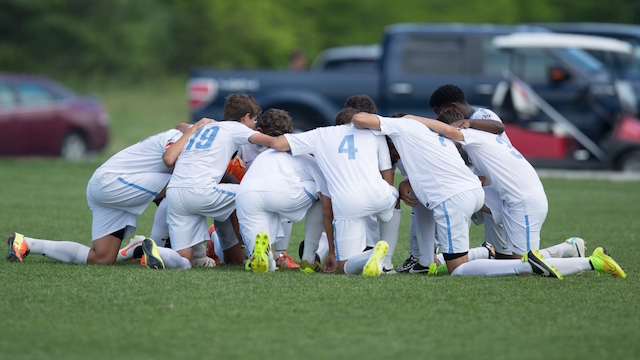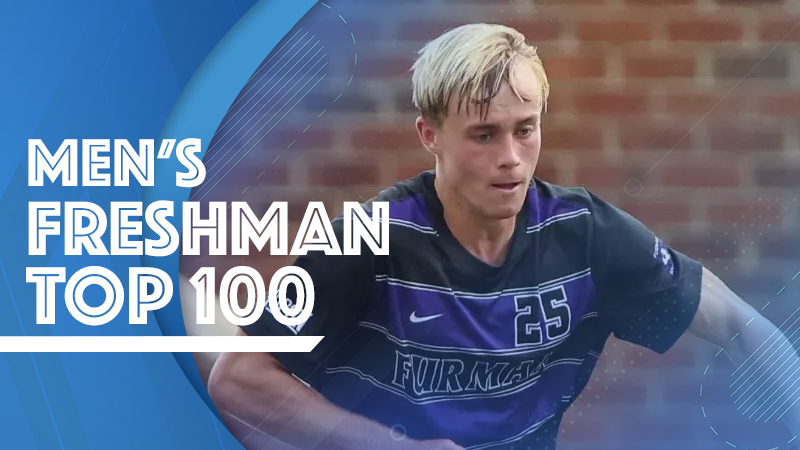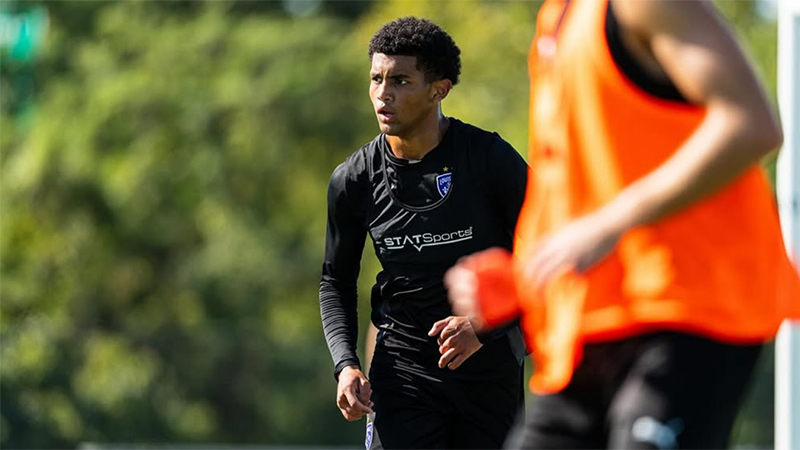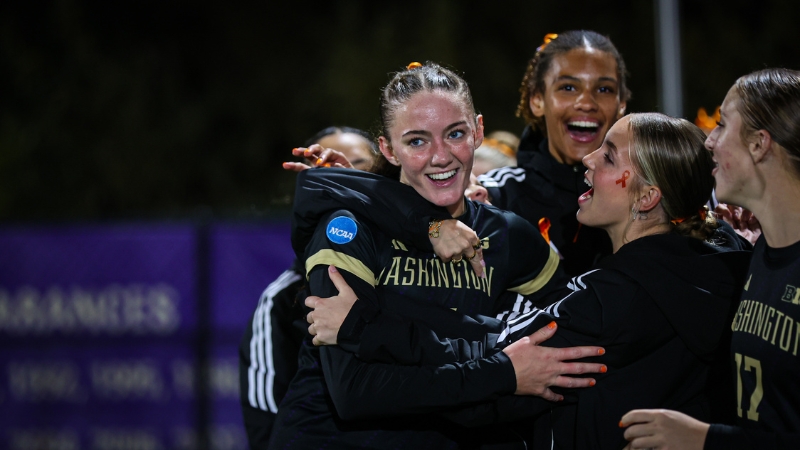In Miami, a youth soccer revial brings life

Within seconds, Juan Carlos Michia realized what he had in George Acosta. And if you trusted anyone with these sorts of things, it was Michia, the man they affectionately call Juanca.
Over his nearly two deacdes as a technical advisor and scout for U.S. Soccer, Michia became a sort of walking roadmap for the advancing development of the American player. Once a player in the old NASL, the Argentine caught on with U.S. Soccer and for two decades developed into one of its most reliable scouts. He helped identify Freddy Adu at a camp in Arlington, Va. before anyone and was one of the first to see Jozy Altidore scoring on sunbaked Florida fields for U.S. Soccer.
In the summer of 2014, Michia was in Miami to run one of U.S. Soccer’s myriad regional training centers designed to identify top young players with the help of local clubs. The federation runs these camps in designated population centers across the country each year as a sort of beacon for local clubs to send their top players for identification. And among the handful sent to Michia by local club Weston FC that summer was a 13-year-old Acosta.
Michia saw it immediately. Acosta danced like a water bug, cutting through challenges and finding space as though he was watching everything unfold on playback. It was the ostensible beginning of Acosta’s U.S. Soccer career, and this week he pulled on the No. 10 jersey at U17 CONCACAF World Cup qualifying in Panama.
The player who last wore that kit in the previous U17 MNT cycle? Christian Pulisic.
“It was exciting,” Michia said, remembering the first time he saw Acosta play. “I love a skillful player. I love a player who can just create chances with no space and in the final third. That’s what he brought in the training center when I first saw him. Now I’m so happy he’s with the national team.”
Acosta, who has reportedly garnered interest from a number of big clubs abroad, is not alone. Weston FC currently has a handful of U.S. youth national team players in the pool, and talented though he is, Acosta has competition as to which will ultimately be the most productive pro. Nicolas Garcia-Morillo moved to Spain from Weston FC in 2015 and is currently a member of Atletico Madrid’s vaunted academy. Within the last two months, U.S. U15 BNT goalkeeper Nicolas Defreitas-Hansen moved to Everton FC, a club certainly accustomed to American keepers. And current Weston FC players like lanky forward Alfred Perez, who was at a U.S. U18 camp as recently as January, frequently dot U.S. Soccer youth national team camp rosters. To put it mildly, there's a reason why a handful of the most technical players in the U.S. pool are all coming out of the same place.
Michia spent nearly 20 years as one of the nine technical advisers for U.S. Soccer, meaning he was a front-line scout sent to identify only the most promising of leads. For the last year and a half, he’s been the director at Weston FC, and he has a message for those who are perhaps just glimpsing the youth talent surge currently happening in south Florida.
“I always believed Miami was the place to find good players, but nobody made a lot of noise,” Michia said. “Now I’m here, and I’m going to make noise.”
Like Pulisic, Acosta and his Weston FC brethren weren’t weaned on MLS academy soccer. As far as Michia's concerned from both his time scouting Miami and now , that’s been a double-edged sword. On one hand, it forced players up through rocky soil and made them more attuned to the difficulties of making it. That helps at the next level. This was never more evident than in the story of Weston FC’s most famous son, Alejandro Bedoya. Bedoya’s is a hardscrabble tale, from little-known Fairleigh Dickinson University up through small European clubs before landing at Nantes in Ligue 1 next to Zlatan Ibrahimovic and Angel di Maria.
And this is the other side of it. With no MLS hook-up for local players, they’ve had to largely make it on their own, without any obvious pathway to the professional game. In many ways, Weston FC is out-pacing a few MLS academies with half the resources and a much more uncertain hook-up to the pros.
“We’re not that professional (in Miami),” Michia said. “We don’t have a lot of full-time coaches in this area. When you don’t have full-time coaches, you cannot provide the right environment for the players. That’s why I think we’re making a big difference at Weston. We have a lot of full-time coaches here, and I believe they all have open minds. They know what we need to develop our players. I believe that’s one of the reasons also we have players in the national team.”
The Development Academy currently has six academies rooted in Florida, a state brimming with soccer wealth and trailing a checkered modern history with the pro game. Just three of those academies dot the southern tip of the state in the South Florida metro, a curling finger down Florida’s southernmost Atlantic coast comprising some 6.5 million people 230 miles from the closest MLS team, Orlando City. If that seems like a small number of DA clubs for such a hugely soccer-mad populace, you aren’t alone in those thoughts.
Los Angeles, in comparison, has nearly three times that number amid a far more complex and in-depth administrative framework. The northeast is too is a dense cluster of pro academies as well as non-pro ones.
Michia thinks Miami has the talent and staying power to be every bit as influential a soccer community as LA or NYC in the talent producer game. It just hasn’t had the chance yet. And in concert with a host of high-end boutique prospects emerging in a big way - including Acosta - he thinks that time is now, and Weston FC is leading the charge. If youth clubs can have golden generations, Weston FC is in the middle of one right now.
“I think sometimes you get a group of players who come out in the right time and the right place,” Michia said of the club’s current player pool. “Being in the academy helps a lot, because we get players practicing five times a week, and a game is six. So when they go to the national team, the gap is not that big. I remember 10 years ago, we used to get players from this area who practiced twice a week, and they went to the national team and the gap was big. It was so hard to deal with the pressure.
“Now our players are more ready to go to the national team and produce. And also the mentality. And I believe it’s because we all - coaches and players - are more willing to take chances and be more ready mentally. I can see players are now more ready to go overseas and become a professional, something I didn’t see before.”
These days, Michia prowls the Weston FC practice fields much in the same way he once traveled across the country to identify the next USMNT star. And to his reckoning there is as much untilled soil in that regard in the Miami metro area as there is anywhere in the country. It’s all about where you look. And you trust Michia when he says he’s looking hard.
“Here, in Miami, we have mostly the skill,” Michia said. “We have millions of people, and 80 percent speak Spanish and play soccer. If you don’t have skill here, you have a very tough time, so you have to adapt. We also have no snow, and our winter is 50 degrees for three days a year. We have a lot of practice, which helps our players to get better technically.
“If you come over to our training environment, it’s the same as many MLS teams. And also the coaches we have are top of the line. We have a good system, a good program to help our players get better. That’s one of the things helping us to become a top club in the country.”
Headlines
- Recruiting Roundup: December 22-January 4
- How Do I Get Scouted by TopDrawerSoccer?
- 2026 Women's Division I Transfer Tracker
- Men's College Postseason Top 100
- Vote for Men's College Soccer Best Goal
- Club Soccer Player Rankings: Girls 2027
-
Commitments: Place in the Patriot League

-
Rocky Mountain High School Roundup

- 2025 Men's DI Postseason Awards
- Niko Markovic Selected First in MLS Draft



